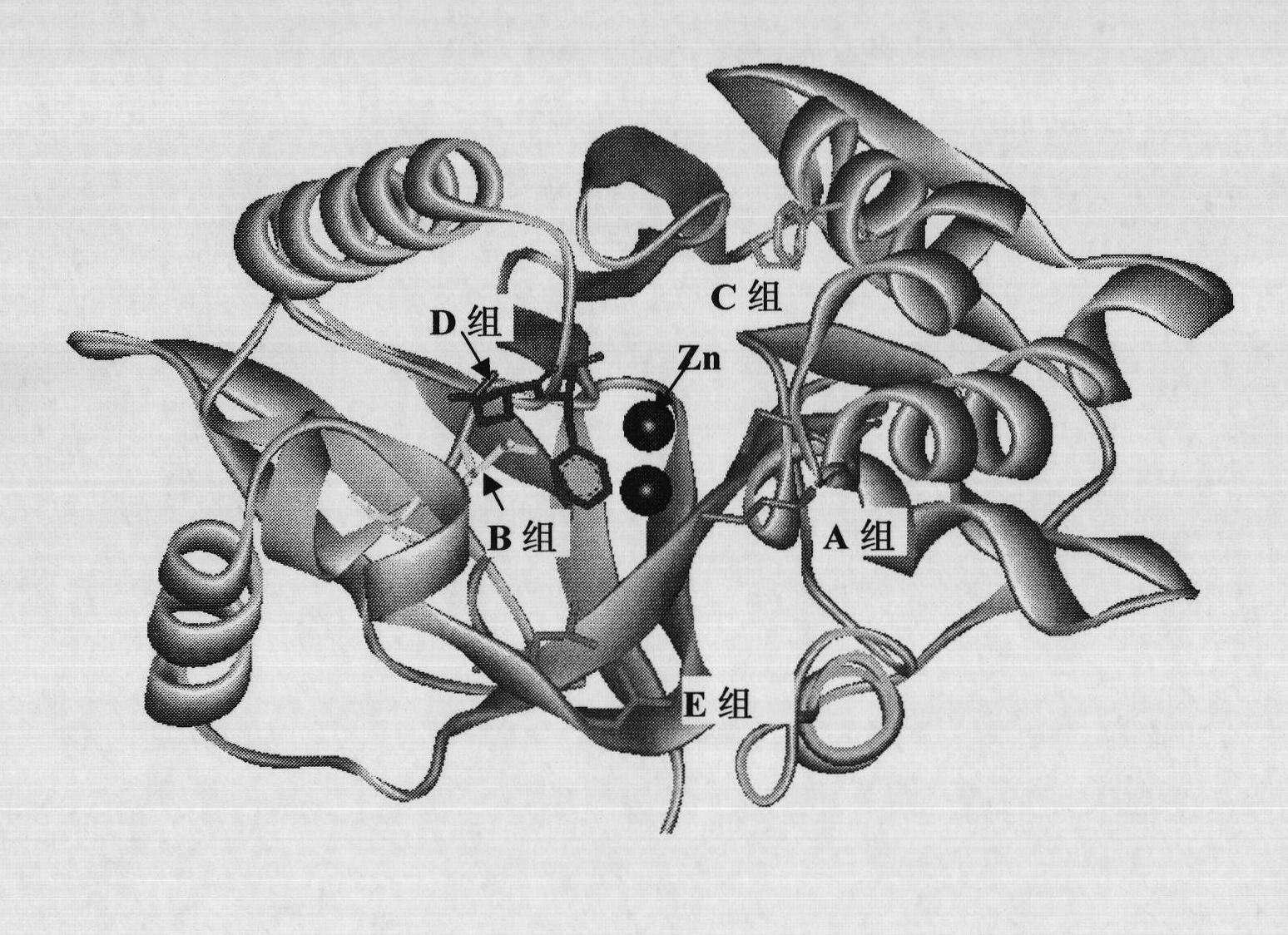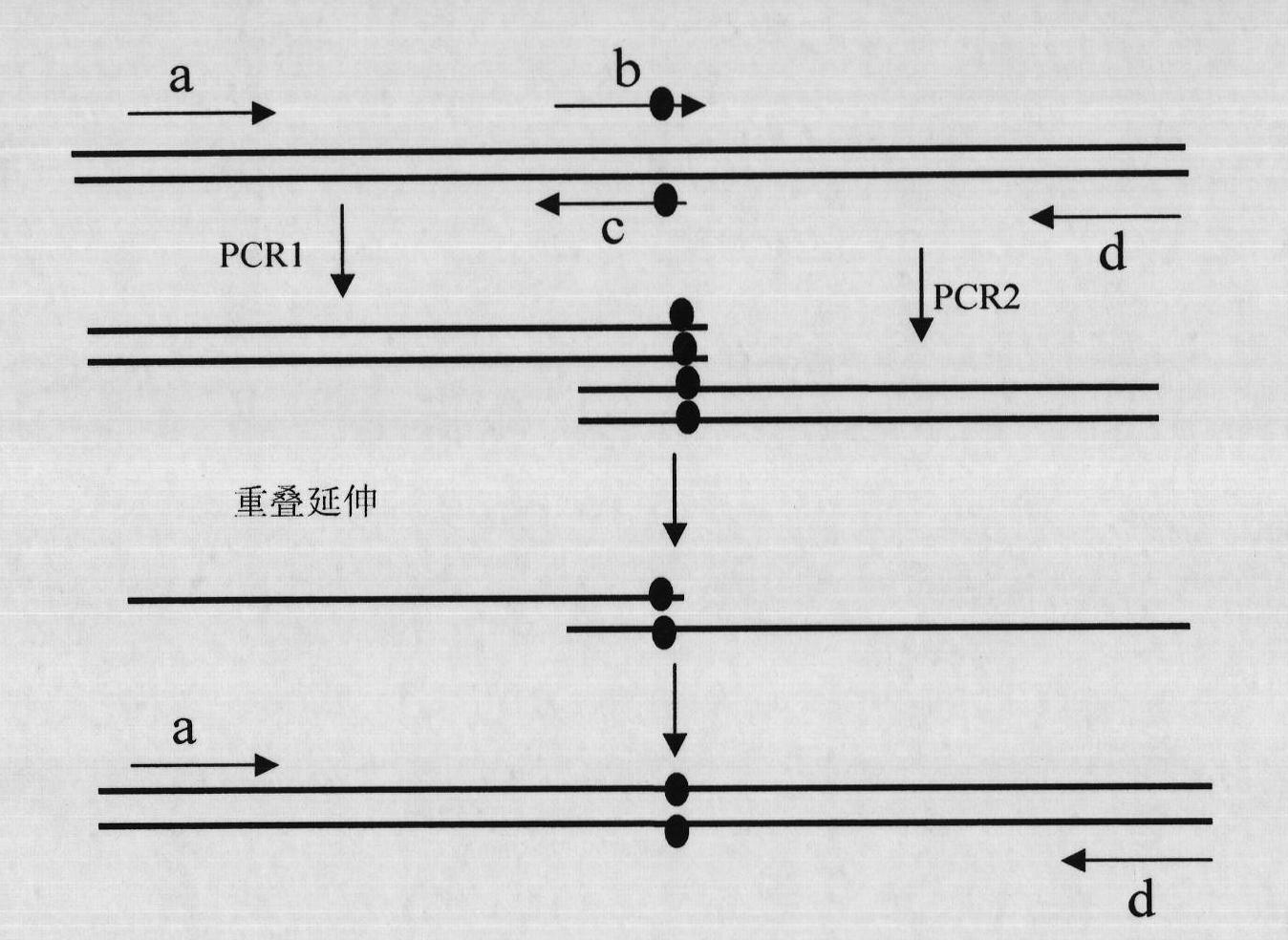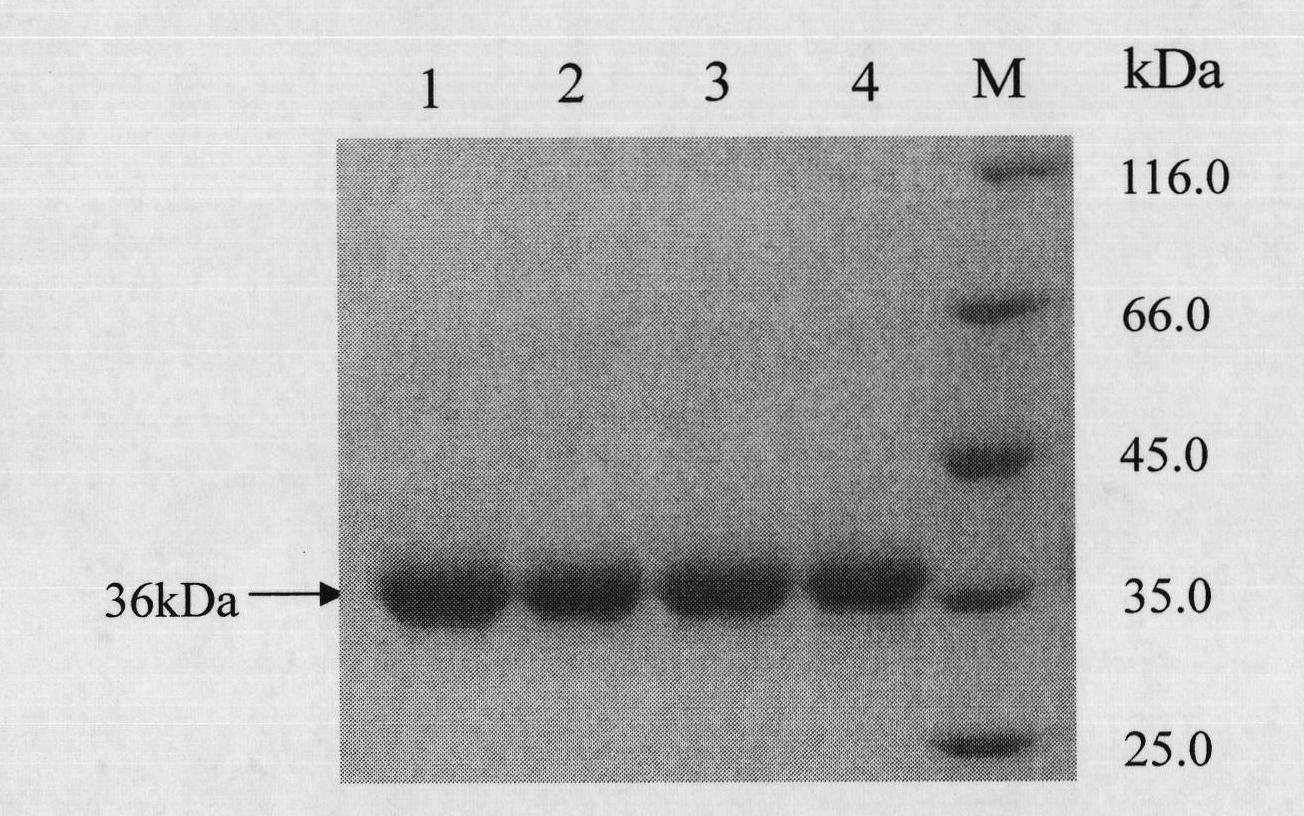Organophosphorus degrading enzyme mutants and coding genes and application thereof
A technology for degrading enzymes and organophosphorus, applied in the field of enzyme mutants, mutants of organophosphate degrading enzymes and their coding genes, and degrading organophosphorus pesticides, which can solve the problems of low sulfur and phosphorus degradation rates
- Summary
- Abstract
- Description
- Claims
- Application Information
AI Technical Summary
Problems solved by technology
Method used
Image
Examples
Embodiment 1
[0066] The first is to analyze the three-dimensional structure of the organic phosphorus degrading enzyme OPHC2 (the accession number in GenBank is AJ605330): using the published MPH crystal structure derived from Pseudomonas sp.WBC-3 as a template, Accelrys Discovery Studio software (Ver.2.5) was used The software builds the three-dimensional structure of OPHC2 and determines the active center. Its three-dimensional structure is as follows figure 1 . OPHC2 is a homodimer, belonging to a typical β / α (TIM) folding barrel structure, in which 8 folding structures form a barrel, which is the active center region of the enzyme, and contains two Zn 2+ . According to the spatial structure characteristics of OPHC2, five mutation regions were designed at the enzyme-substrate binding pocket near the active center, and the mutations in these regions could not affect the structure of the catalytic active center of the enzyme. To ensure that the selected amino acid pairs can be close to ...
Embodiment 2
[0067] Embodiment 2 Obtaining of Mutant Gene Fragment
[0068] The technique of overlap extension PCR was used. Design a pair of flanking primers at both ends (a and d) and five pairs of primers (b and c) containing the desired mutation site, wherein the b primer contains the desired mutation site. The mutation site is a double-point saturation mutation, and the intermediate primer of the amino acid pair to be mutated corresponds to 6 bases, and the base corresponding to each amino acid is replaced with nnk. The primer sequences are shown in Table 1. Two rounds of PCR were carried out for each point mutation. In the first round of PCR, primers a and c were used to amplify the DNA fragment of the upstream sequence of the gene, and primers b and d were used to amplify the DNA fragment containing the mutation site and its downstream sequence. . Use agarose gel to recover these two pieces of DNA fragments, and then mix the two pieces of PCR products. Since b and c have overlappi...
Embodiment 3
[0076] The construction of embodiment 3 saturation mutant library
[0077] Ligation: The PCR product recovered in Example 2 was directly digested with BamHI and HindIII and then ligated with the pUC19 vector treated with the same double digestion. The ligation system was: pUC19 2 μL, PCR product 6.5 μL, T 4 Ligase 0.5 μL, 10X reaction buffer 1 μL, mix gently, react overnight at 16°C. Each library makes 5 connection systems.
[0078] Transformation: Freeze and thaw Top10 competent cells stored at -70°C on ice, take 50 μL of competent cells and add them to the above connection system, gently pipette to mix, and ice-bath for 30 minutes. The ice-bathed system was accurately heat-shocked at 42°C for 90 sec, then immediately placed on ice for 2 min, and added 400 μL of pre-cooled LB to equilibrate to room temperature, and incubated at 200 rpm for 1 h at 37°C on a shaker. Add 4 μL of 1mol / L IPTG and 40 μL of 20 mg / ml X-gal to mix, and spread all the transformed bacterial solution o...
PUM
| Property | Measurement | Unit |
|---|---|---|
| pore size | aaaaa | aaaaa |
Abstract
Description
Claims
Application Information
 Login to View More
Login to View More - R&D
- Intellectual Property
- Life Sciences
- Materials
- Tech Scout
- Unparalleled Data Quality
- Higher Quality Content
- 60% Fewer Hallucinations
Browse by: Latest US Patents, China's latest patents, Technical Efficacy Thesaurus, Application Domain, Technology Topic, Popular Technical Reports.
© 2025 PatSnap. All rights reserved.Legal|Privacy policy|Modern Slavery Act Transparency Statement|Sitemap|About US| Contact US: help@patsnap.com



